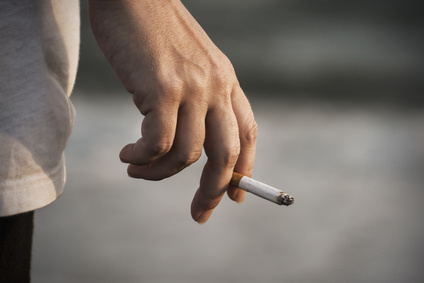Tobacco rulings and revenues: The numbers just don’t add up

Despite Quebec Superior Court Justice Brian Riordan’s ruling against Big Tobacco this week, plaintiffs should hold off on the celebration. So, too, should taxpayers and health advocates.
Of course, the tobacco companies will appeal the $15-billion ruling against them. Whether the ruling is sustained or overturned, though, we are entering a complex game in which taxpayers, plaintiffs, cigarette manufacturers, e-cigarette producers and illegal suppliers all have an enormous stake.
Right now, the monies claimed in class-action suits and provincial government suits against Canada’s three major tobacco companies amount to well over $100-billion. Health advocates see Monday’s ruling as the first instalment due to smokers who the court found were deceived by tobacco companies.
Yet Justice Riordan was not required to consider where the funds would come from, only the merits of the case. In fact, in the numerous other cases against Big Tobacco, no judge, court, group of litigants or provincial government is required to consider where the money to pay the plaintiffs will come from.
There is effectively a zero probability that an amount of $100-billion will ever be collected from the Big Three (Imperial Tobacco, JTI-Macdonald and Rothmans Benson & Hedges), and the public should stop believing that any such windfall will just drop into provincial health budgets or the bank accounts of plaintiffs.
It is fantasy to think that Canada can mimic the U.S. Master Settlement Agreement of 1999 – an agreement to transfer $250-billion to plaintiffs over a 25-year period. In that situation, tobacco tax rates were extremely low, and the asset values of manufacturers were enormous.
Current tobacco tax yields in Canada are in the $5-billion range and falling. Smoking is in decline, and the illegal share of the market is large – about one-third in Ontario. The best estimate is that annual Canadian-market manufacturer profits are substantially lower, on the order of $750-million. This would suggest a capital asset value in the $10-billion-plus range, using an appropriate price-to-earnings ratio.
Here, then, is the central problem: If the Canadian market is worth $10-billion to producers – admittedly a speculative estimate – where will we find the $100-billion claimed in all these suits?
To garner roughly 10 times the capital value of Canadian producers, our Canadian plaintiffs must have designs on their international parents. Given the Quebec court’s ruling, if the Big Three pay up, then the cupboard is essentially bare for all the other plaintiffs. Would the international assets of the holding companies of Canada’s Big Three become available for plunder in the event of other successful claims?
If the international assets of tobacco manufacturers are indeed subject to extraterritorial claims, it is hard to imagine that other governments would just sit back and watch us engage in asset stripping in their economies to the benefit of Canadian plaintiffs. If Canada can successfully sue tobacco manufacturers internationally, then why would others not follow? The Japanese government, for example, owns one-third of Japan Tobacco Inc., the parent of JTI-Macdonald. Will Japanese taxpayers happily hand over billions of dollars to Canadians, particularly when Japanese courts have already ruled against similar claims in some class-action suits?
If the international parents cannot fund the many hundreds of billions demanded by the world’s governments and plaintiffs, and higher tax rates will generate little extra revenue, the only option remaining for Canadian governments would be to strip the Canadian manufacturers of their assets. Once in the hands of government, these de facto nationalized assets could be used to continue production, and thereby continue to generate some $5-billion of tax revenue a year.
Alternatively, they could choose to shut down legal production altogether. Of course, this would be a real bonanza for illicit suppliers, while doing little to secure monetary compensation. Indeed, it would give rise to an annual loss in tax revenue of several billion dollars, all while introducing a new era of prohibition. Tobacco production is relatively simple, and new producers can set up with minimal initial capital investment. The product is ultra-lightweight, making it suitable for smuggling and illicit distribution, and gangs already see it as another attractive drug that fits in nicely with their portfolio of products.
Smokers who would prefer to continue getting their nicotine legally would likely switch to electronic cigarettes. Nevertheless, liquid nicotine can now be purchased on the Internet for a tiny fraction of the cost of leaf tobacco, and even if sales were to grow substantially, they would never generate the same levels of tax revenues as traditional cigarettes.
Given the total amounts claimed against the tobacco companies, versus their estimated capital value, it’s difficult to see how this whole process will add up – for anyone other than the lawyers, that is.
Ian Irvine est professeur d’économie à l’Université Concordia et chercheur associé à l’Institut économique de Montréal. Il signe ce texte à titre personnel.

